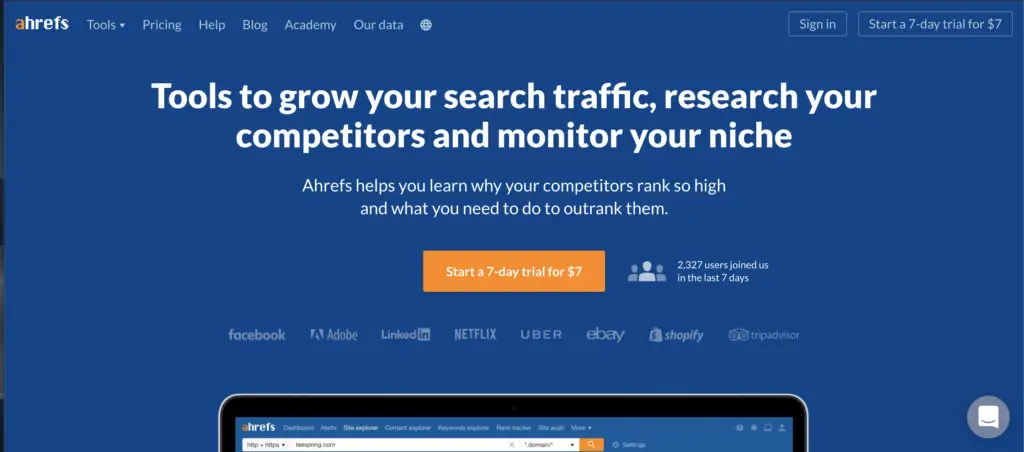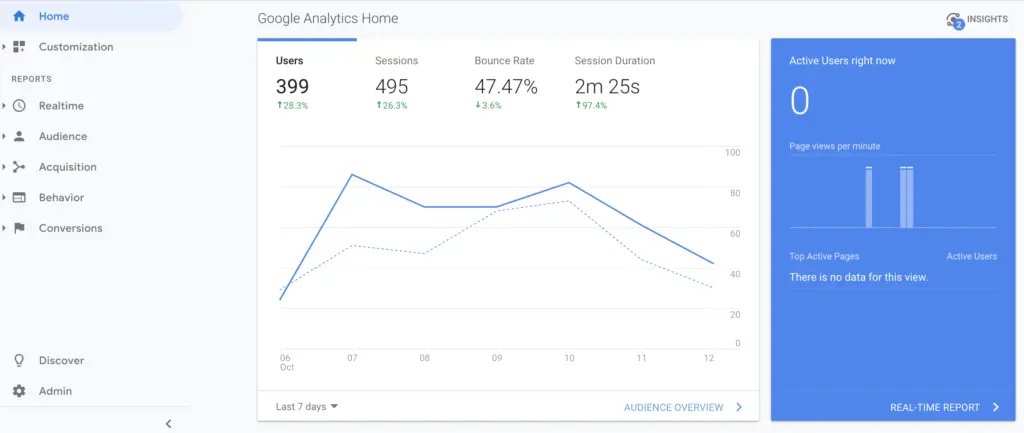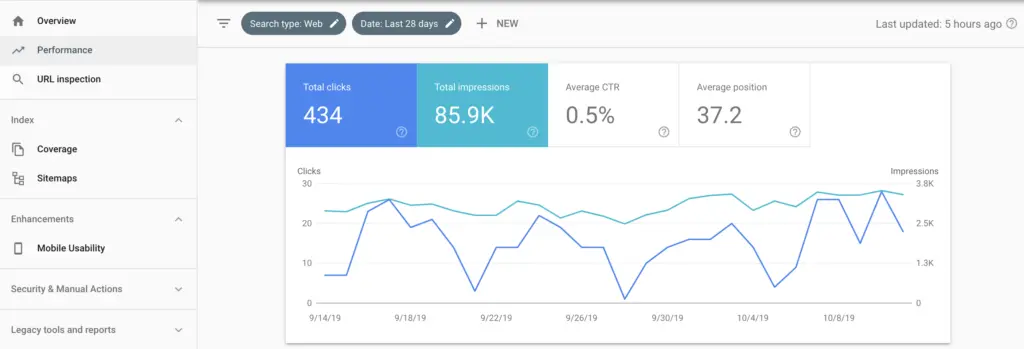This article is from guest author, Tom Welbourne.
Looking for an SEO blog post that covers all the fundamentals so you don’t have to read a bunch of other blog posts?

We have one right here for you.
This blog post covers all the basics and a few extras that will help you get your blog off the ground without having to constantly update your knowledge every few days to keep up to date with the latest SEO trends from Google.
Blog SEO is Like Bodybuilding
If you use the analogy of the bodybuilder who is looking to win a competition, her day is predominantly focused around good solid training day-in, day-out, with the addition of proper nutrition and sleep.
Now, she also looks to include nutritional supplements and specific exercises that the average Joe wouldn’t do when they train in the gym. These are the additional rituals that she includes to give her that 1% boost in performance.
However, the bulk of her success (70% – 90%) is in part to the basics: consistent training, healthy eating and good sleep.
The extra additions of supplements and training aids that might help her squeeze an extra 1 rep are beneficial but for the person who just wants to get started and going, they should focus on the basics.
If the beginner was to start taking nutritional supplements and buy the training aids to help him squeeze out extra reps but not keep a regular training schedule, eat junk and sleep 3 hours a day, he is setting himself up for failure.
It’s the same with blog SEO. There are too many “hacks” out there, that to be honest with you, aren’t worth the time.
This blog post will cover the following basic topics;
- The only SEO tools you need to get your SEO right
- Ranking factors that you should focus your energy on
- Best keywords for you to use that are customised to your business
- Create long-lasting links that pay you dividends into your retirement
- A strong content strategy that has people coming back for more
“If you get the basics right, everything else will fall into place.” – Lewis Pugh
1. The Only SEO Tools You Need To Get Your SEO Right
Let’s start with the elephant in the room…
Tools.
Statistics show that there’s going to be more SEO tools than people by 2020 and the drive for change is unrelenting from the industry (not true but wouldn’t surprise us!).
We saw a blog post a few weeks back that included 55 tools that you could use for your SEO and we were…SHOCKED.
55 tools to potentially choose from? How?
We thought it was a typo and the author had added an extra 5 to the headline, but we were wrong.
Instead, we thought we would create a list of tools less than 10% of that list and drill that list down to just 3, which we hope was the intended goal when the piece of content was published.
a. ahrefs
ahrefs is the go-to for most freelancers and marketing agencies.
It’s a great all-in-one tool that includes tools such as:
- Competitor Analysis
- Keyword Research
- Backlink Research
- Content Research
- Web Monitoring
- Rank Tracking
Just from the list above you have your blog SEO covered from head to toe and you could pretty much call it a day there.
Just one problem though…it’s $99 after your 7-day trial ends which costs $7 by the way.
b. Google Search Console
According to Google:
“Search Console tools and reports help you measure your site’s search traffic and performance, fix issues, and make your site shine in Google Search results.”
Google Search Console has the following features included:
- Ability to search which queries bring users to your site
- Submit sitemaps and individual URLs for crawling
- Understand how Google search sees your page
- Get alerted about site fixes
You can also upgrade your site with the following:
- Monitor, test and track your AMP pages
- Monitor and improve your site’s rich results
- Test and improve your site’s mobile usability
c. Google Analytics
Another free tool offered by Google is Analytics which can provide some very interesting insights about your site. It’s like a personality test, with everything you need to know about a website.
Google Analytics has the following features included:
- Ability to fine-tune your website
- Tracks and reports website traffic
- Ability to find which pages and links users use the most
2. Ranking Factors That You Should Focus Your Energy On
There are forums dedicated to the speculation of what counts as a ranking factor in Google and there are a lot of suggestions from people who have thrown their hat into the ring.
Again, we just want to focus on the basics that are not only good for your site but most importantly, your reader.
a. Dwell Time
Dwell time is simply how long a visitor spends on your site. Period.
For people to stay on your site for long periods, they need to find something on your site that ideally solves their problem or keeps them entertained.
To put your blog content’s purpose into two categories:
- Inform
- Entertain
You either want to inform your website visitor on how they can improve their lives/solve that problem or you need to entertain them.
Video works great for dwell time because they are more likely to keep the visitor engaged, they’re easier to digest and reading can be off-putting for a lot of people.
b. Website Speed
A site that takes longer than 3 seconds to load will turn off 53% of website visitors and put them off from ever coming back again according to Kissmetrics.
You want your website to take no longer than 2 seconds to load. Any more and it’s a ticking time bomb. Run your website speed check with Google here.
Improve your site simply by:
- Compressing images – this can speed up a web page = more optimal experience for the user
- Enabling caching – store a visitor’s data for future use = they don’t have to fill in their details all over again
- Using a content delivery network – using a CDN will help deliver static content faster for users = increase in page speed and engagement from the user.
3. Best Keywords For You To Use That Are Customised To Your Business
Before you launch your blog, you should have done your research… your keyword research.
You need keywords that are customised for your business specifically and for the user intent you want.
If your site is already up and running then it might be better to find out which queries led them to landing on your site which you can do by using Google Search Console and clicking on the performance tab.
Each blog post should target one keyword. The best way to find out what keyword a page is targeting is to ask a few friends to read it and ask them to describe what they think it is about in one word/phrase/sentence.
Rules for getting the best keywords:
- Look at long-tail keywords
- Search for low competition keywords
- Match the user intent with the keywords
- Make sure the keywords have enough search volume
a. Look at Long-Tail Keywords
They’re more specific, usually longer than 2-3 words and have lower levels of competition.
b. Search For Low Competition Keywords
If you’re just starting out and not very well-known, you need to target lower competition keywords that fewer sites are competing for.
c. Match The User Intent With The Keyword
Many keywords are specific to where the user is at in his or her journey. An example of a high intent keyword would be, “Buy Asics 409xt size 9” and a lower intent keyword would be, “running shoes”.
d. Make Sure The Keyword Has Enough Search Volume
It’s no good if you’re targeting a keyword and nobody is searching for it. Unless you’re playing the long game then you need to make sure there is adequate volume against the keyword.
You can find some great keywords using Google Search Console or by using a paid tool such as ahrefs which we mentioned earlier in the article.
When you have found your keywords, make sure to include them in your H1, H2, H3 headlines, meta descriptions and also copy.
When writing blog content, you also want to mention your keyword in the first 100 words of the article for SEO optimisation.
4. Create Long-Lasting Links That Pay Dividends In The Long Run
Backlinks are any link from an external website that links to your site. We’ve used a few backlinks in this post to link to research we’ve used to back up our points.
The more backlinks you have and the higher the domain authority from the link, the more credible your blog will appear to be to Google.
This is a very time-consuming strategy but it pays off in the long run because your link is technically there forever on the other website unless it gets taken down, replaced or removed, which most often doesn’t happen.
To do this, you can use two tried and tested approaches:
- Guest post on other websites
- Write amazing content that people want to link to
Guest posting is less scalable, but it gets your name out there and more often than not, you can include a highly visible picture of you/your logo with a summary about your brand and what you do which will catch people’s eyes.
The best way to achieve lots of backlinks to your content is through unique statistical data that you have collected yourself which people will want to use in their content and link to. Journalists love this sort of content too!
5. A Strong Blog Content Strategy That Has People Coming Back For More
There’s not much better than finding a website or blog that has great, valuable content which is added to every day. This is why news sites have droves of people coming back for more entertainment or information.
A news site will publish hundreds of articles each day to break the news and draw people to their site. The content may not be valuable in terms of knowledge, but it’s entertaining. Remember dwell time and the two ways to increase it? Inform and entertain.
Hopefully, you know a bit more about your industry/product/service than the people who are seeking your type of business out and you’re confident that you can produce valuable content that will inform your reader.
If Google sees people coming back to your blog regularly, you’re showing Google that your content is genuinely of interest to its audience because users keep coming back for more!
Build a content strategy that has people coming back in their droves to hear more about what you’re up to or to find out the latest piece of information on your industry.
Be the newspaper of your industry. Mix in informative material with entertainment.
A great content strategy for a blog is to create a storyline where people are hanging off every last word, like when they just have to watch the next episode in a Netflix binge.
Conclusion
There you have it, we’ve summarised the most important parts of SEO for blogs. We can safely say that if you follow the 5 rules above, you will improve your blog’s SEO without the need to do any hacks.
SEO is a long-term process and there aren’t many short-term results to begin with.
The only way to be successful with SEO is to put in the work and plan for months/years instead of days/weeks.
Go easy on the tools, focus on the ranking factors that matter, but most importantly, create content that provides large volumes of value to your reader because they’re the person(s) you’re doing this all for, right?
–
About the author: Tom Welbourne is the founder of The Good Marketer – a Digital Marketing Agency in the heart of London that specialises in helping small business owners with their digital marketing.




